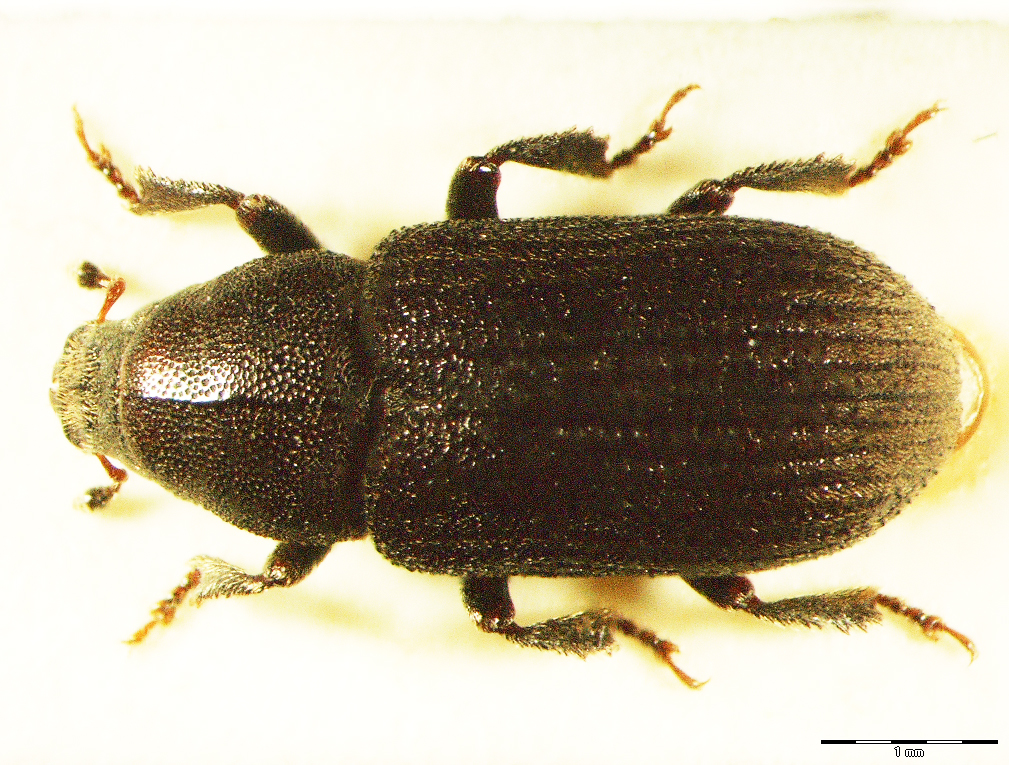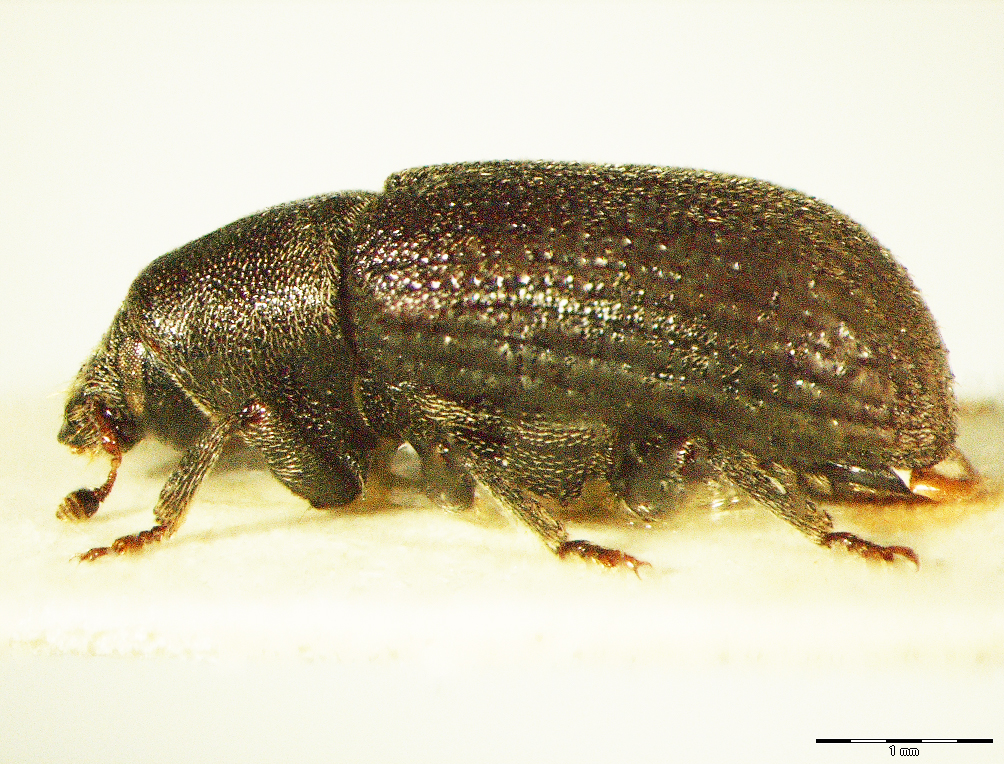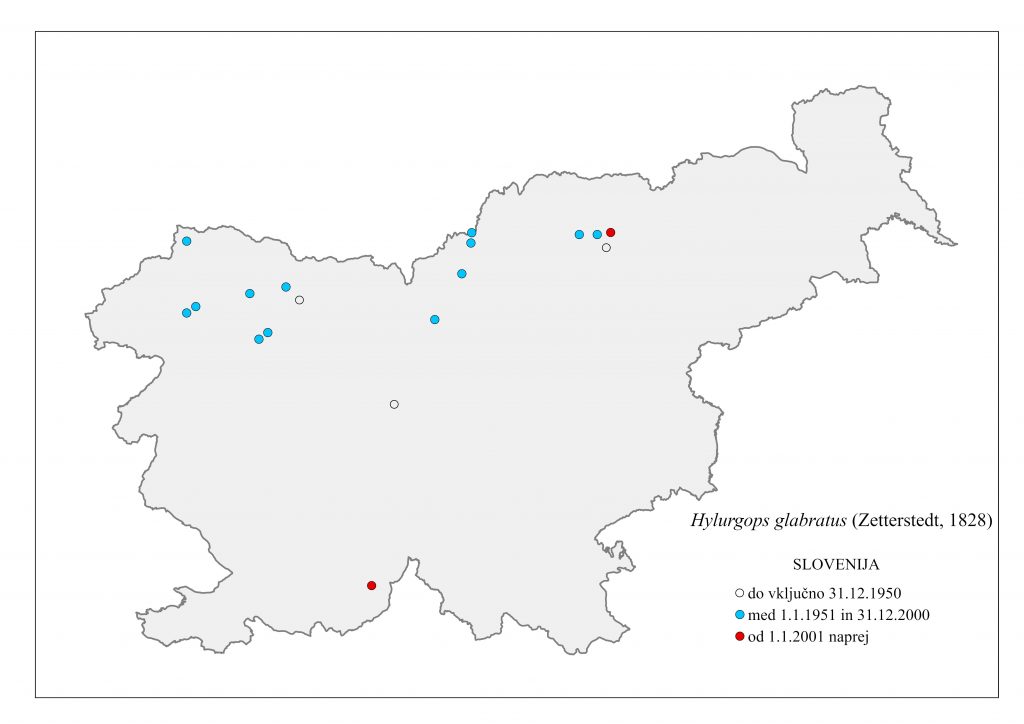02.01. Hylurgops glabratus (Zetterstedt, 1828)
Presence
E: AU BU BH BY CT CZ DE EN FI FR GE GR HU IT LA NR NT PL SK SL SP SV SZ
A: ES FE HEI JA JIL KZ MG NC SC TAI TR WS
Figure 17: Hylurgops glabratus, dorsal, lateral (Photo: Maja Jurc)
Older catalogs and keys – citations of name
Brancsik 1871: (Hylastes decumanus Er.); Grüne 1979: H. glabratus (Zetterstedt, 1828); Freude, Harde, Lohse 1981: H. glabratus Zetterstedt; Lucht 1987: H. glabratus (Zett., 1828); Titovšek 1988: H. glabratus (Zetterstedt); Pfeffer & Knížek 1993: H. glabratus (Zetterstedt, 1828); Pfeffer 1995: H. glabratus (Zetterstedt, 1828).
Figure 18: Hylurgops glabratus, distribution map according to historical and recent data
Ecology and presence in Slovenia
The species is distributed in northern and central Europe, the countries of the former Yugoslavia and Asia. In Slovenia, most sites are found in mountainous areas of northern Slovenia, especially above 1000 m a.s.l. (Figure 18). Host plants include Picea abies, P. obovata, less frequently Pinus sylvestris, P. cembra, P. mugo, P. cembra, Abies alba, Larix spp. and Cedrus spp.. In Slovenia, it is found only on P. abies. It is a monogamous species develops one generation per year, swarming late, in May and June. The tunnel system is uniramous longitudinally, the length of the maternal gallery is 4-7 cm. The body is conical, adult length is 4.5-5.5 mm (Figure 17). The species is distinctly secondary and does not have major economic significance.



